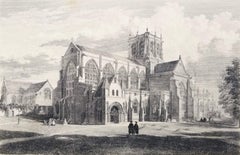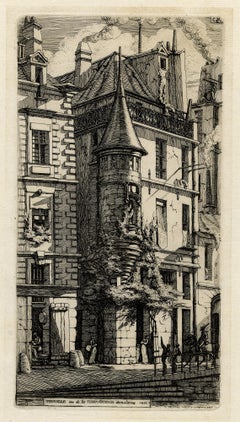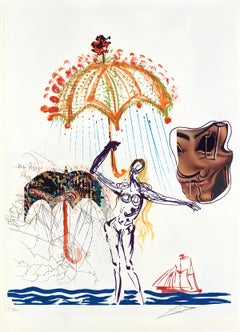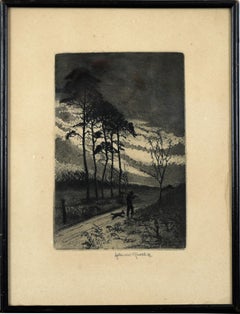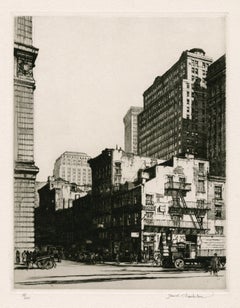Engraving Landscape Prints
1860s Victorian Engraving Landscape Prints
Engraving
1780s Old Masters Engraving Landscape Prints
Laid Paper, Engraving
Mid-19th Century French School Engraving Landscape Prints
Laid Paper, Etching, Drypoint
1970s Surrealist Engraving Landscape Prints
Mixed Media, Drypoint, Lithograph, Screen
Early 20th Century American Realist Engraving Landscape Prints
Paper, Ink, Drypoint, Etching
1920s American Modern Engraving Landscape Prints
Drypoint
Early 20th Century Contemporary Engraving Landscape Prints
Oil, Engraving, Lithograph
Mid-18th Century English School Engraving Landscape Prints
Laid Paper, Engraving, Watercolor
1930s Modern Engraving Landscape Prints
Drypoint, Etching
Early 20th Century English School Engraving Landscape Prints
Handmade Paper, Etching, Drypoint
20th Century American Modern Engraving Landscape Prints
Drypoint, Etching
Late 19th Century English School Engraving Landscape Prints
Engraving, Photogravure
1940s English School Engraving Landscape Prints
Mezzotint, Etching
Mid-18th Century English School Engraving Landscape Prints
Watercolor, Handmade Paper, Laid Paper, Engraving
Early 20th Century American Modern Engraving Landscape Prints
Handmade Paper, Etching, Drypoint
Early 2000s Modern Engraving Landscape Prints
Mezzotint
Late 18th Century Naturalistic Engraving Landscape Prints
Engraving, Etching, Aquatint
1920s Modern Engraving Landscape Prints
Drypoint, Etching
2010s Abstract Engraving Landscape Prints
Photographic Film, Emulsion, Watercolor, C Print, Color, Engraving, Lith...
1910s Naturalistic Engraving Landscape Prints
Paper, Drypoint, Etching
1920s American Impressionist Engraving Landscape Prints
Drypoint
Late 18th Century Naturalistic Engraving Landscape Prints
Engraving, Etching, Aquatint
Mid-19th Century Impressionist Engraving Landscape Prints
Laid Paper, Drypoint, Etching
1990s Contemporary Engraving Landscape Prints
Mezzotint, Aquatint
1890s Impressionist Engraving Landscape Prints
Drypoint, Etching
1830s Engraving Landscape Prints
Engraving, Mezzotint
1870s American Impressionist Engraving Landscape Prints
Engraving, Woodcut
1930s Modern Engraving Landscape Prints
Drypoint, Etching
1970s Surrealist Engraving Landscape Prints
Mixed Media, Lithograph, Drypoint, Screen
Early 19th Century Naturalistic Engraving Landscape Prints
Engraving
1870s Symbolist Engraving Landscape Prints
Handmade Paper, Engraving
Early 20th Century American Modern Engraving Landscape Prints
Laid Paper, Drypoint, Etching
1690s Engraving Landscape Prints
Engraving
1780s Engraving Landscape Prints
Engraving
Late 20th Century Contemporary Engraving Landscape Prints
Drypoint, Etching, Aquatint
1980s Pop Art Engraving Landscape Prints
Drypoint
20th Century American Modern Engraving Landscape Prints
Drypoint, Etching
Early 19th Century Engraving Landscape Prints
Engraving
Mid-18th Century Old Masters Engraving Landscape Prints
Engraving, Etching
1810s Realist Engraving Landscape Prints
Engraving
1930s American Modern Engraving Landscape Prints
Drypoint, Etching
Late 18th Century Italian School Engraving Landscape Prints
Engraving, Mezzotint, Etching
Late 20th Century Contemporary Engraving Landscape Prints
Mezzotint
1950s American Modern Engraving Landscape Prints
Drypoint, Aquatint
Late 19th Century French School Engraving Landscape Prints
Laid Paper, Etching, Drypoint
1990s Contemporary Engraving Landscape Prints
Mezzotint
Early 20th Century American Modern Engraving Landscape Prints
Handmade Paper, Drypoint, Etching
1930s Modern Engraving Landscape Prints
Drypoint, Etching
1780s Engraving Landscape Prints
Engraving
1920s American Impressionist Engraving Landscape Prints
Drypoint
Mid-18th Century Naturalistic Engraving Landscape Prints
Engraving, Mezzotint
1930s Modern Engraving Landscape Prints
Drypoint, Etching
Early 20th Century French School Engraving Landscape Prints
Handmade Paper, Drypoint, Etching
2010s Contemporary Engraving Landscape Prints
Mezzotint
1780s Engraving Landscape Prints
Engraving
1760s Naturalistic Engraving Landscape Prints
Engraving
Early 2000s Contemporary Engraving Landscape Prints
Mezzotint, Aquatint
Early 1800s Victorian Engraving Landscape Prints
Engraving
Early 20th Century French School Engraving Landscape Prints
Handmade Paper, Drypoint, Etching
1930s Modern Engraving Landscape Prints
Drypoint, Etching
